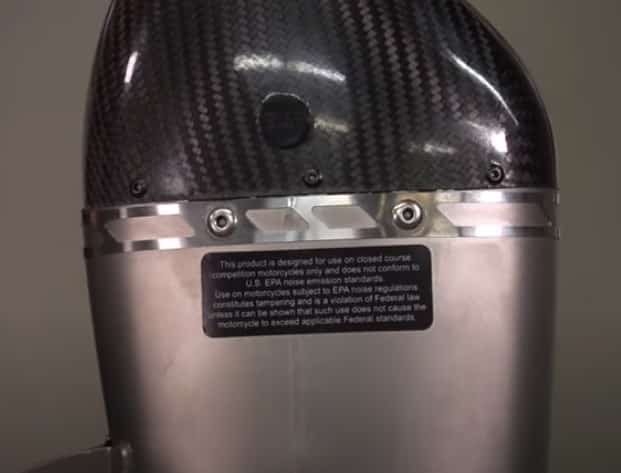Deprecated: mb_convert_encoding(): Handling HTML entities via mbstring is deprecated; use htmlspecialchars, htmlentities, or mb_encode_numericentity/mb_decode_numericentity instead in /home/u598013642/domains/motorcyclegear101.com/public_html/wp-content/themes/acabado/functions.php on line 2160
Deprecated: mb_convert_encoding(): Handling HTML entities via mbstring is deprecated; use htmlspecialchars, htmlentities, or mb_encode_numericentity/mb_decode_numericentity instead in /home/u598013642/domains/motorcyclegear101.com/public_html/wp-content/themes/acabado/functions.php on line 2160
Deprecated: mb_convert_encoding(): Handling HTML entities via mbstring is deprecated; use htmlspecialchars, htmlentities, or mb_encode_numericentity/mb_decode_numericentity instead in /home/u598013642/domains/motorcyclegear101.com/public_html/wp-content/themes/acabado/functions.php on line 2160
Deprecated: mb_convert_encoding(): Handling HTML entities via mbstring is deprecated; use htmlspecialchars, htmlentities, or mb_encode_numericentity/mb_decode_numericentity instead in /home/u598013642/domains/motorcyclegear101.com/public_html/wp-content/themes/acabado/functions.php on line 2160
Deprecated: mb_convert_encoding(): Handling HTML entities via mbstring is deprecated; use htmlspecialchars, htmlentities, or mb_encode_numericentity/mb_decode_numericentity instead in /home/u598013642/domains/motorcyclegear101.com/public_html/wp-content/themes/acabado/functions.php on line 2160
An aftermarket exhaust is at the top of most riders’ mod lists, but what are you really getting with that shiny pipe and our stock exhausts all just junk anyway?
There is certainly still some room to improve performance. Still, if you’re installing a full exhaust system like the Yoshimura, you absolutely have to do it in conjunction with a fuel controller like a Power Commander.
If you’re not tuning your fuel to match your new systems, you’re not only leading power on the table, but you’re probably causing your bike to run lean.
That means crappy throttle response, increased engine temperature, and lots of popping on deceleration.
A lot of people think the stock pipe on their bike is just cobbled together as an afterthought.
20 or 30 years ago, that might have been the case, and if you’re writing a bottom dollar bike, that may still be the scenario.
The exhaust is very carefully engineered for the vast majority of motorcycles, especially sportbikes and performance machines.
In fact, after the engine, the exhaust system usually soaks up the most RND resources.
That’s because the pipe is critical to the bike’s performance, it’s sound, its look, and of course, its compliance with various noise and emissions regulations.
Don’t underestimate your stock exhaust because every component has been designed to fulfill a specific purpose.
There is a lot more going on there than meets the eye. The headers are pretty straightforward, but multi-cylinder bikes often have these crossover tubes.
They’re there to harness pressure waves in neighboring pipes to broaden the spread of power. On some bikes, There’s even a valve in the crossover.
They’re only linked at certain rpm. Further downstream to header pipes merge and funnel into the collector.
The collector does the mass of the baffling and houses the catalytic converter.
In this case, there are three of them, and it provides the volume and routing that’s needed to attenuate noise to an acceptable level.

Fuel-Injected bikes will have one or more O2 sensors, which are kind of amazing.
They analyze the exhaust gas and transmit info back to the ECU so that the computer can make minor fuel adjustments for things like air temperature and altitude.
The next major component we come to is the servo-controlled valve just before the muffler.
By opening and closing, it regulates the backpressure upstream in the system, and by doing that, you can flatten the torque curve.
Sometimes the valve is also used to quiet the exhaust to meet noise regulation. But if you think that thing is just there to make the sound testers happy, think again.
Violating backpressure has a huge impact on engine performance, and similar technology is used in MotoGP to improve mid-range power.
Finally, you’ve got the muffler, which will have some packing stuffed around the core to soak up sound further.
More and more, though, it’s the bread box under the engine that’s responsible for all of the muffling and the gas clean-up.
Because of that, some bikes like the RC-390 or the FZ09 don’t even bother with a traditional muffler.
As you can see, stock exhaust is a lot more than just some slap together pipes.
While most manufacturers pour a ton of effort into designing a good system, it’s still heavily compromised because they have to conform to all those rules and regulations. That is where aftermarket pipes come in.
Are Yoshimura Exhaust Street Legal?
Aftermarket pipes like the Alpha-T from Yoshimura are designed for closed-course competition use only. The label on the pipe makes all the difference because it means this exhaust is not street-legal, and therefore not restrained by the rules that stock exhaust must follow.

What Does a Yoshimura Exhaust Do?
So while a stock pipe has to check a bunch of noise and emissions boxes, pipes like the Yoshimura exhaust’s only objectives are to cut weight, add style, improve the sound, and boost power.
Surprised that I listed power? Well, it’s last on the list because it’s not the primary draw these days, or at least it shouldn’t be.
Again, 20 years ago, you can get major gains by slapping on a pipe, but these days stock exhaust does a damn good job of offering broad, usable power.
Does An Aftermarket Exhaust Improve Performance?
In my opinion, the single biggest draw to an aftermarket pipe is weight saving.
The stock exhaust has a ton of stuff on it, plus it’s huge. Without a catalytic converter, a bulky bread box, or a backpressure valve, an aftermarket exhaust can flash pounds off your bike.
The Alpha-T system for the new Yamaha YZFR6 weighs 11 pounds. Compare that to the stock system, at a whopping 22 pounds.
Any weight you can remove your motorcycle will make it handle better, plus installing an aftermarket pipe beats the hell out of going on a diet.
There’s also a lot more style and attention to detail in the aftermarket. Welds are more precise; there are nice touches like jacketed Springs, polished pipe sections, and of course, a trick Muffler.
Fancy finishes like carbon fiber and titanium are rarely available from the factory, but they’re pretty common on aftermarket systems, and some companies take it to the next level.
Aftermarket pipes are also considerably louder, which some people like.
It sounds sweet at idle and fantastic at full song on a straightaway, but raise pipes are obnoxiously loud on the street.
They’re also illegal on account of that whole race use only sticker. But, if you want a little more sound and a whole lot more style, Yoshimura actually offers EPA and carb compliant slip-on mufflers.
And in my opinion, for street bikes. A slip-on muffler is definitely the way to go.
They’re cheaper, a whole lot easier to install, and they probably won’t require an expensive fuel controller.
To summarize, your stock exhaust deserves respect for juggling a bunch of difficult jobs, and aftermarket pipes are good for saving a bunch of weight, improving sound and style, and possibly boosting power if you tune your fueling to match.
That’s it for this article. I hope that clears up the debate of the whole stock or aftermarket thing.
Recent Articles
- 4 Things To Wear To Stay Warm On Your Motorcycle In Winter
 Most of us here ride to work every day all year round, and we have lots of personal experience when it comes to taming the elements.
Most of us here ride to work every day all year round, and we have lots of personal experience when it comes to taming the elements. - How To Clean Your Motorcycle In 5 Easy Steps
 We all love a clean and shiny motorcycle but knowing which cleaning products to buy can sometimes be a little daunting, and so too can be the method to clean your motorcycle.
We all love a clean and shiny motorcycle but knowing which cleaning products to buy can sometimes be a little daunting, and so too can be the method to clean your motorcycle. - How Does A Manual Transmission Work On A Motorcycle
 For most people, their motorcycle transmission is one of the most mysterious parts of their bike. How does it work, and why do we shift down into first, but then
For most people, their motorcycle transmission is one of the most mysterious parts of their bike. How does it work, and why do we shift down into first, but then - How Sprockets Affect Speed on Motorcycles And Why
 It doesn’t matter if you’re a racer; if you’re just into trails riding your dual-sport, your bike can be geared differently to your performance needs. Not only on a dirt
It doesn’t matter if you’re a racer; if you’re just into trails riding your dual-sport, your bike can be geared differently to your performance needs. Not only on a dirt - Is It Hard Learning To Ride A Motorcycle? Myth Busted
 Learning to ride a motorcycle isn’t that hard. most new learners take between two to eight weeks to get riding with daily practice. How long it takes to learn to ride depends on their skills and their bike.
Learning to ride a motorcycle isn’t that hard. most new learners take between two to eight weeks to get riding with daily practice. How long it takes to learn to ride depends on their skills and their bike.

